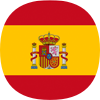Post-graduate FI Study-Group
Making a lesson meaningful
This series of workshops is dedicated to deepening the art of Functional Integration. The human connection, and your ability to make your lesson meaningful to your student allows the magic of learning to happen.
Finding meaning is embedded in the choice of functional pattern you build your FI around and how you communicate with your student throughout.
A coherent FI structure, precision and clarity of intention grow from your functional understanding of a lesson. This understanding is deepened by your own experience of specific ATMs and related background knowledge.
We will explore new variations and alternative strategies and identify when each FI might be useful, allowing you to create a bridge to someone’s life and the things they really want to be able to do. You will learn to actively engage your FI students in the learning process, consolidate your knowledge and develop confidence around giving successful FIs.
There will be space to share your experience and reflection after practicing this way from one workshop to the next.
The workshops will include:
- Theoretical & practical background to a particular FI structure
- ATMs illustrating the functional pattern of action
- Reflection on the process of making a lesson a meaningful
- FI demonstrations and self exploration
- References to Moshe’s work
- Clarifications, Q & A, reflection, group discussion
- Guided FIs & FI practice with clients
- Strategies for learning vs. change
Important: As the focus of this study-group is on deepening your practice of FI, please arrange for a guest to be there for you to work with on Saturday and Sunday right after our one hour break.
Directing Forces through the Diagonal (webinar)
Exploring diagonal connections by compressing or lengthening through arms and legs allows us to reach into the pelvis, spine, chest and shouldergirdle. Helping your student to sense a clear transmission of force through the trunk can be useful for addressing their ability to mobilize, stabilize and support themselves over a standing leg, thus freeing the opposite arm for reaching or the opposite leg for walking.
We will also look at ways to include active participation of your client. This helps learning to become accessible and reproducible.
Related Seminars
Photo credits
- Photo with woman sitting – © Kathryn Hume-Cook
- Photo of skeleton – © Otto Norin on Unsplash
- Photo of woman with green shirt – © International Feldenkrais® Federation Archive, Robert Golden














